St. Lawrence Island lies in the middle of the Bering Sea. The only people on the island are Yupik Eskimo who reside in two villages. During the winter when the Bering Sea is frozen, the locals hunt seals, sea lions, and walrus that live on the ice. When the ice melts in the spring, they hunt whales that follow the ice pack of the Arctic Ocean as it recedes north. We visited the small village of Gambell on the northwest side of the island.
| Gambell , St. Lawrence Island: I'm looking at some seal meat hung in the sun to age. I almost walked under it and got dripped on. A local lady said not to worry; it will come off in about six months. |
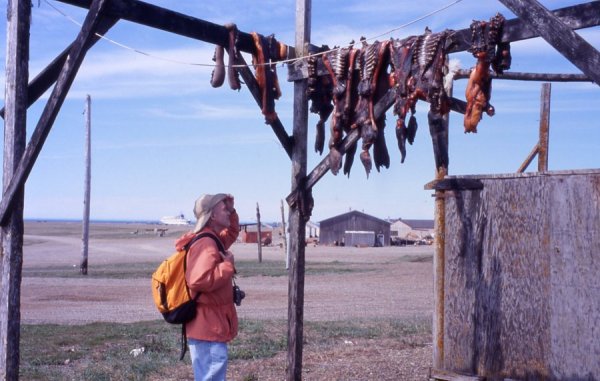 |
| Gambell, St. Lawrence Island: A local Yupik man shows us the art of harpooning a whale. He told us he harpooned six whales in his lifetime. Note the float attached to the harpoon, which causes the whale to float and not sink to the bottom of the ocean after it is harpooned. |
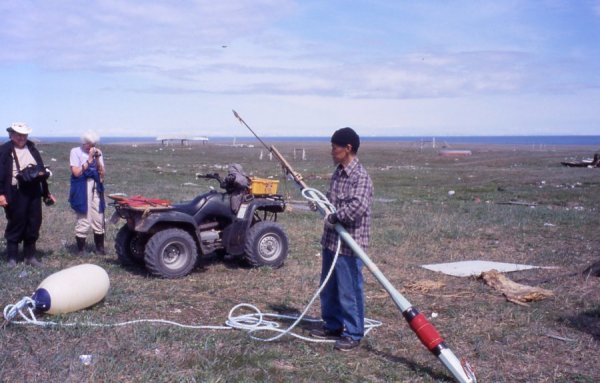 |
| Everyday: We generally ate our lunches on the hind deck even though it was often chilly. |
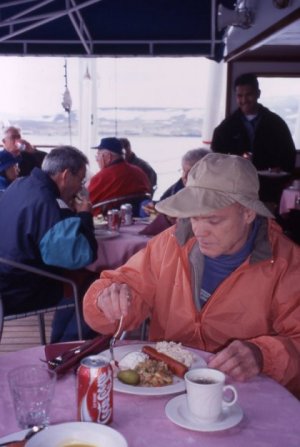 |
| Gambell, St. Lawrence Island: Here is another remains of a dead whale. I guess in the the old days people would wring out the blubber and get oil to burn in their lamps. Nowadays, the local people cut off the parts they eat and leave the rest to rot. In addition to the Eskimos of the Arctic, Norwegians and Japanese have eaten whale meat for centuries. |
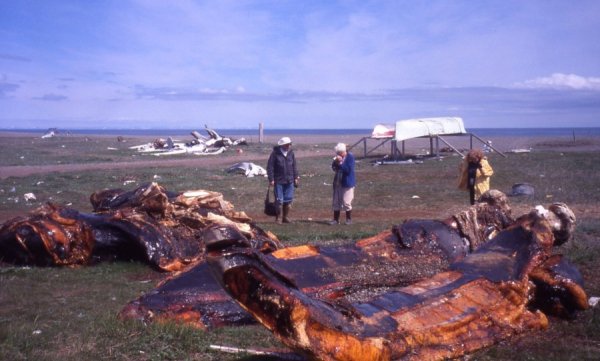 |
| Gambell, St. Lawrence Island: Susan inspects the jawbone of a Bowhead whale. There were whale bones of all species scattered around Gambell. |
 |
| Gambell, St. Lawrence Island: A couple seal heads. I don't' know what the deal was with these. I'd guess the rest of the bodies were used for meat and pelts, and the heads were left sitting in the sun for don't ask me what. |
 |
| Everyday: There were several naturalists on the ship to answer questions and give lectures. Here one of them (in pink) explains something to a group of passengers. This lady knew more about birds than I'd ever care to know. | 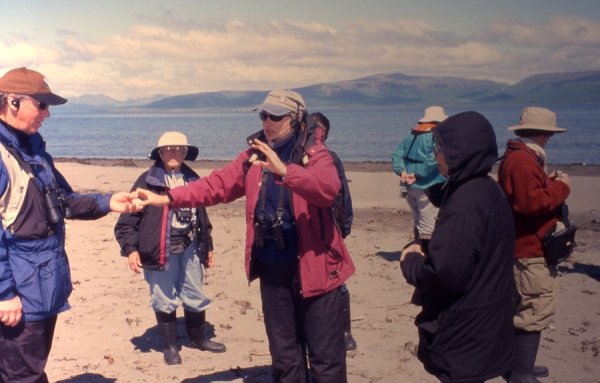 |